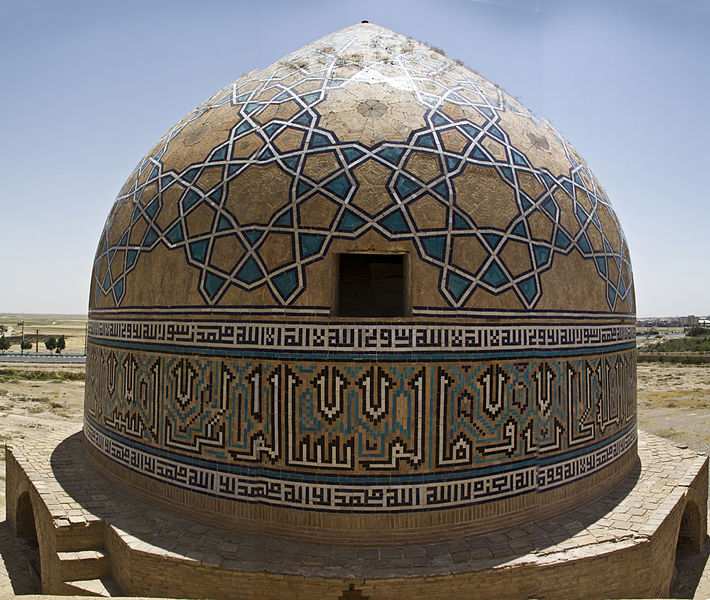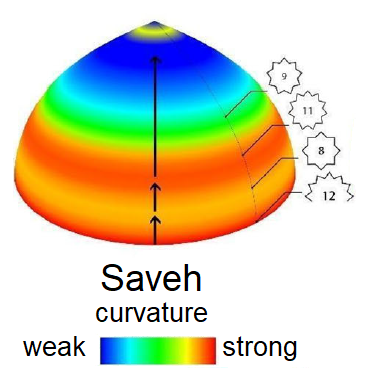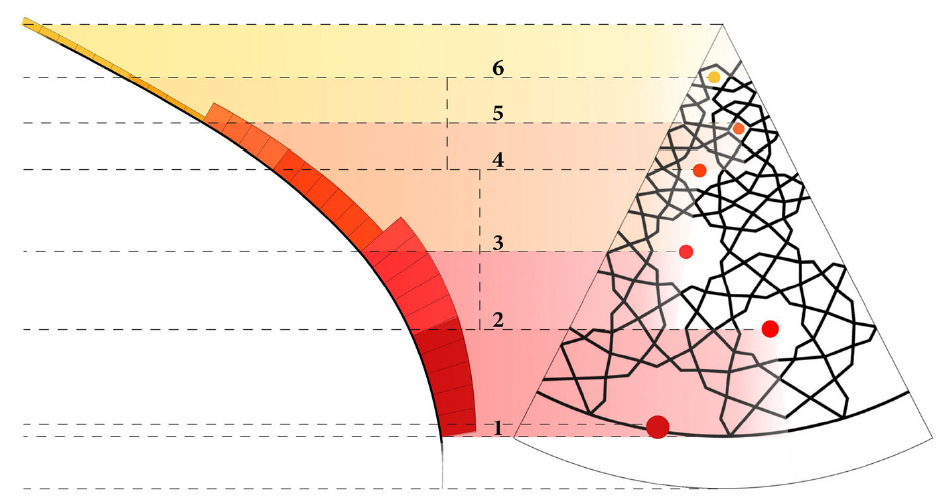Saveh
domes
Curvature and width of a dome varies with its height. You can’t place the same number of congruent stars at every height. For this an ingenious technique was established that could be applied as well inside as outside of domes.
- In the apex of the dome a star was placed, often12- or 16-pointed.
- From apex to base the dome was divided into sectors of curved triangles, as many as the number of points of the stars at the apex. These curves triangles were used as unit repeat for the dome.
- The curved triangles were filled in with stars, depending on the curvature of the dome. Doing so one could keep the segments on the stars constant and creating bigger and smaller stars.
- On each row figures were created to connect the stars. The aim was to use as little different figures as possible and to avoid angles that distort the harmony of the dome.

Friday Mosque Saveh (late 16th century)
The progression of the curvature of the Saveh dome isn’t constant. Strong at the base it decreases to
increase in a second phase to decrease again towards the apex. In the apex eight segments form an 8-pointed star.

pattern of line and stars on the dome
In the article Girih for Domes: Analysis of Three Iranian Domes by Mohammad Hossein Kasraei, Yahya Nourian, Mohamadjavad Mahdavinejad the authors show an intersection of the Saveh dome. Six zones with different curvature are translated into stars with a different number of points.
